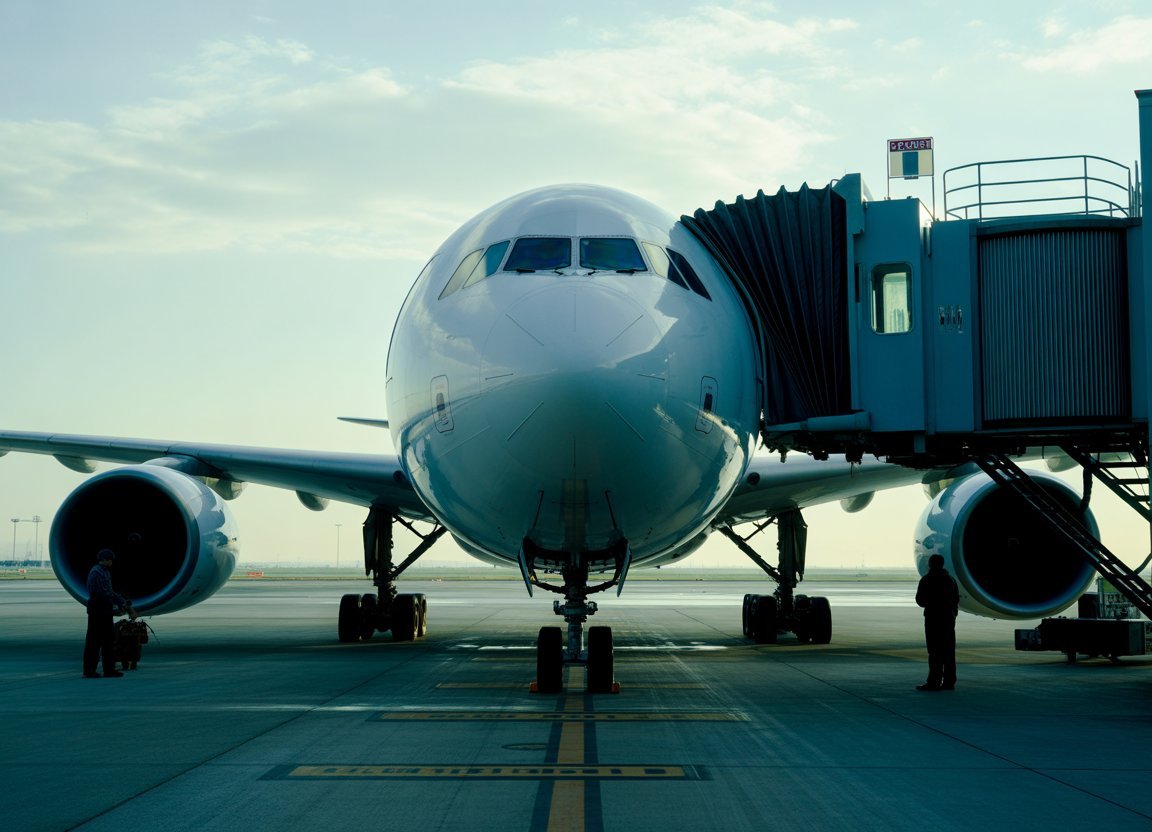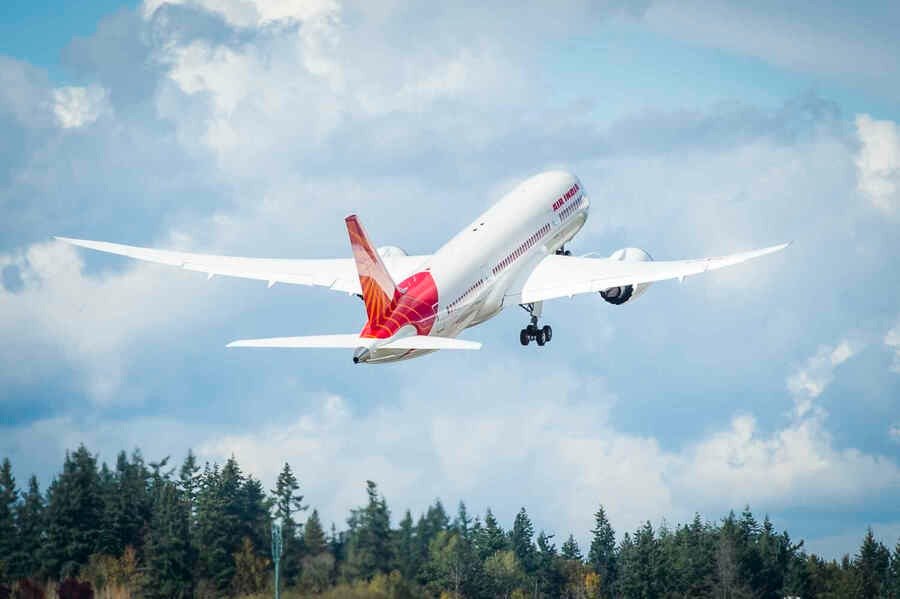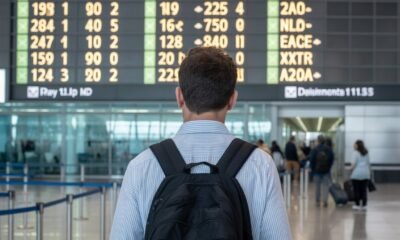Flight Buzz
Tomorrow Air Canada Flights May Face Travel Disruption at Montreal, Toronto, Vancouver and Calgary Airports as Attendants Protest: Check Your Trip Plans if You are Flying

Published on
August 11, 2025 |
Air Canada passengers should prepare for possible delays and disruptions on Monday, August 11, as flight attendants launch a coordinated national day of action at four of the airline’s busiest hubs—Montreal, Toronto, Vancouver, and Calgary. The Canadian Union of Public Employees (CUPE), which represents 10,000 flight attendants, says the protest is aimed at demanding pay for all hours worked and ending what they call “poverty wages” that no longer match the cost of living in 2025. While the airline has not announced mass cancellations, the strategic choice of these major hubs—central to Air Canada’s 220-plus route network—means that even limited disruptions could ripple across domestic, transborder, and international flights. Passengers are being urged to check their flight status before traveling, arrive early, and be ready for changes to their plans.
At the Heart of the Dispute: A Fight for Pay and Recognition
The planned action is designed to bring public attention to the ongoing and intense contract negotiations between the 10,000-member flight attendant workforce and the airline. According to a media advisory released by CUPE, the union is pressuring Air Canada to address fundamental issues related to pay and working conditions.
A primary point of contention is the demand for flight attendants to be compensated for all hours worked. Historically, airline crew pay is often tied only to flight time, meaning hours spent on the ground managing boarding, conducting safety checks, and waiting between assignments can go unpaid. The union is fighting to have this “non-working time” officially recognized and compensated.
Furthermore, the union has taken a strong stance on wages, which they describe as “poverty wages” that are no longer sustainable or “consistent with the economic reality of 2025.” Wesley Lesosky, president of the Air Canada component of CUPE, signaled the union’s resolve, stating:
“We’re heading into an intense weekend of bargaining, with strong support from our members. The standard simply can’t be maintained, because it’s no longer acceptable.”
“We’re proud to put on this uniform and help keep the public safe on their journey, but the days of us doing it for free or for poverty wages must end. Air Canada flight attendants from coast to coast are coming together on August 11 to stand up for our each other, and for the pride and dignity of this profession. We’re standing together for respect and a fair contract that matches to the professionalism and dedication we bring to work every day.”
A Ripple Effect: How Protests at Key Hubs Could Impact Travel
The strategic choice of protest locations underscores the potential for widespread impact. Toronto Pearson International Airport, Montréal-Pierre Elliott Trudeau International Airport, Vancouver International Airport, and Calgary International Airport are the primary arteries of Air Canada’s domestic and international network. Any slowdown or disruption at these hubs could create a ripple effect across the entire system.
If disruptions were to occur, the impact on routes could be significant. Toronto Pearson serves as Air Canada’s global hub, and any issues there could affect a vast number of transatlantic flights to Europe, trans-border routes to the United States, and major domestic connections. Montreal’s airport is a key gateway to Eastern Canada and many French-speaking destinations abroad. Vancouver is the main hub for transpacific flights to Asia, making it critical for global commerce and leisure travel. Calgary is essential for Western Canada and U.S. leisure destinations.
The interconnected nature of these airports means that a delay in one city can quickly cascade, affecting flight schedules thousands of miles away.
Air Canada Network Size, Q2 Profit, and Passenger Traffic
Air Canada operates flights to over 220 destinations worldwide, serving 47 countries across six continents through a network of domestic, transborder, and international routes.
In Q2 2025, the airline reported a net profit of C$186 million, with passenger revenues topping C$5 billion. Passenger traffic remained strong, with over 12 million passengers carried during the quarter, driven by high demand for both international long-haul and domestic travel. While revenue rose slightly year-over-year, profitability was pressured by operational costs and weaker demand on certain U.S. routes.
A National ‘Day of Action’: Protest Details
The “simultaneous action” is scheduled to unfold during peak hours to maximize visibility:
- Montreal-Pierre Elliott Trudeau International Airport – 1 p.m. ET
- Toronto Pearson International Airport – 1 p.m. ET
- Vancouver International Airport – 10 a.m. PT
- Calgary International Airport – 11 a.m. MDT
In their advisory, the union noted that the mobilization aims to “remind the public that flight attendants play a crucial role in aircraft safety, in addition to providing quality service and ensuring the smooth operation of flights across the country.”
Potential Impact on Domestic and International Routes
The selection of four major hubs means that a wide range of domestic and international routes could be affected if disruptions occur.
Domestic: Toronto–Vancouver, Toronto–Calgary, Toronto–Montreal, Montreal–Vancouver, Montreal–Calgary, Calgary–Vancouver, Toronto–Halifax, and Toronto–Ottawa are among the most at-risk routes.
International: Toronto–London, Toronto–Paris, Toronto–Frankfurt, Toronto–Tokyo, Toronto–Hong Kong, Toronto–Dubai, Montreal–Paris, Montreal–London, Vancouver–Tokyo, Vancouver–Seoul, Vancouver–Sydney, Vancouver–Hong Kong.
Leisure: Toronto–Cancun, Toronto–Punta Cana, Toronto–Montego Bay, Montreal–Cancun, Montreal–Varadero, Vancouver–Honolulu, Calgary–Phoenix, Calgary–Palm Springs.
Due to Air Canada’s hub-and-spoke model, even small disruptions can quickly affect connections across Canada, the U.S., Europe, Asia, and the Caribbean.
Air Canada flights may face delays and cancellations Monday, August 11, as flight attendants strike at Montreal, Toronto, Vancouver, and Calgary airports to demand pay for all working hours and an end to low wages.
Advice for Travelers Amid Uncertainty
For passengers scheduled to fly on Monday, caution is advised:
- Check your flight status directly with Air Canada before leaving for the airport.
- Arrive earlier than usual to manage potential congestion.
- Bring essentials like water, snacks, chargers, and any required medications.
- Have a backup plan, especially for time-sensitive or international connections.
- Keep receipts for potential reimbursement if delays lead to extra expenses.
The situation remains fluid, and while the event is not labeled a formal strike, its scale and timing mean passengers should be ready for operational challenges.
Flight Buzz
Air India Rolls Out ‘Namaste World’ Sale With Unbeatable Offers To UK, US, Canada, Sri Lanka, Thailand, Malaysia, Japan, And More Domestic Flights Starting At One Thousand Four Hundred Ninety Nine Rupees And Special Discounts On International Routes

Published on
August 11, 2025 |
UK, US, Canada, Sri Lanka, Thailand, Malaysia, Japan, and more are at the heart of Air India’s exciting ‘Namaste World’ sale, which offers travelers unbeatable fares starting from just one thousand four hundred ninety-nine rupees on domestic routes. This special promotion includes attractive international round-trip prices, making it easier for passengers to explore these popular destinations and beyond. With bookings available through multiple channels and additional discounts for Visa card users and online reservations, Air India’s ‘Namaste World’ sale provides exceptional value and convenience for travelers planning their next trips.
Air India has recently announced its exciting new promotional campaign, the ‘Namaste World’ sale, designed to offer travelers substantial savings on fares across its extensive domestic and international flight network. This limited-time sale presents an excellent opportunity for both leisure and business travelers to explore India and the world at affordable rates, with one-way domestic tickets starting from just ₹1,499 and international round-trip fares beginning at ₹12,310. The campaign aims to boost travel enthusiasm by making flights more accessible and affordable during this promotional period.
The ‘Namaste World’ sale is valid for bookings made until 11:59 PM on August 15, 2025, allowing ample time for customers to plan and secure their travel itineraries. Tickets purchased under this promotion are valid for travel until March 31, 2026, providing flexibility for travelers to choose convenient dates within the next several months. Whether planning a short domestic getaway or an international adventure, the sale encompasses a wide range of routes and destinations, promising travelers a diverse selection of options.
International fares under the ‘Namaste World’ promotion are priced competitively in local currencies, making it easier for passengers across different countries to take advantage of the discounts at various points of sale worldwide. This inclusive pricing approach helps to eliminate confusion and provides clarity for customers when booking tickets abroad.
The sale launched on August 10, 2025, with initial bookings available exclusively through Air India’s official digital platforms—its website and mobile app. This strategy encouraged tech-savvy travelers to access the best deals online without additional convenience fees, ensuring a seamless booking experience. From August 11, 2025, the promotional fares were extended to all other sales channels, including airport ticket counters, Air India’s customer service centers, and authorized travel agents. This broad accessibility ensures that customers who prefer traditional booking methods or require personalized assistance can also benefit from the discounted fares.
In addition to the headline discounts, Air India has introduced further savings through promo codes aimed at rewarding loyal customers and promoting cashless payments. By applying the code FLYAI during booking, passengers can enjoy an additional discount of up to ₹1,000 per person, making the already attractive fares even more affordable. Moreover, Visa cardholders are offered exclusive benefits by using the promo code VISAFLY, which grants discounts of up to ₹2,500 per passenger. These special offers encourage the use of digital payments and provide significant incentives for travelers to book their flights using Visa cards.
Visa cardholders enjoy a tiered discount structure based on the journey type. For domestic flights, they receive a flat ₹250 off on one-way tickets and ₹500 off on round-trip bookings. On international flights, the discounts are even more generous, with savings of up to ₹1,500 on one-way travel and up to ₹2,500 for round-trip journeys. These layered benefits underscore Air India’s commitment to enhancing customer value and encouraging early bookings.
Beyond ticket discounts, Air India is also enhancing the overall travel experience by offering reductions on ancillary services, which often add considerable cost to a journey. Travelers can avail up to 60% off on prepaid baggage allowances, allowing them to carry more luggage without worrying about hefty fees at the airport. Additionally, seat selection upgrades, including preferred seats and those with extra legroom, are available at up to 15% discount. These add-ons can be booked either through direct channels such as the airline’s website and app or through indirect channels including travel agents, giving passengers flexibility in customizing their trips to suit comfort and convenience preferences.
The promotional fares cover a broad spectrum of international destinations, with all-inclusive round-trip ticket prices that reflect competitive rates across cabin classes. For example, flights from India to the United Kingdom start at ₹44,500 for economy class, ₹95,000 for premium economy, and ₹1,43,000 for business class. European destinations generally have fares beginning at ₹44,000 in economy and going up to ₹1,30,000 in business class. Canada-bound travelers can secure economy seats starting at ₹62,199, with business class tickets priced up to ₹1,77,399. Similarly, fares to Australia start at ₹51,317 in economy and extend to ₹1,63,291 in business class. Flights to the United States are offered at rates from ₹49,635 in economy up to ₹1,90,666 in business class.
In addition to these key international markets, the promotion includes routes to popular destinations such as Sri Lanka, the United Arab Emirates, Singapore, Thailand, Indonesia, Malaysia, and Japan. Competitive pricing across all these destinations ensures that travelers can explore Asia and beyond with affordable and convenient Air India service options.
Passengers interested in taking advantage of the ‘Namaste World’ sale should act quickly, as the seats available under this promotional offer are limited and subject to availability on a first-come, first-served basis. Not all flights or routes are covered by the sale, and fares may vary depending on the point of sale, currency exchange fluctuations, and applicable taxes or fees. Therefore, customers are encouraged to carefully review fare rules and conditions when booking.
Air India’s ‘Namaste World’ sale represents a major push to stimulate travel demand amid a competitive airline industry. By combining attractive base fares with additional promotional codes and discounts on ancillary services, the airline is offering a compelling package designed to attract a wide spectrum of travelers—from budget-conscious tourists to premium customers seeking comfort and value.
Whether you’re planning a domestic trip to visit family or friends or aiming to jet off to an international business meeting or vacation, this sale offers a unique opportunity to save significantly on airfare and enjoy Air India’s renowned hospitality and extensive route network.
UK, US, Canada, Sri Lanka, Thailand, Malaysia, Japan, and more are included in Air India’s ‘Namaste World’ sale, offering domestic fares from just one thousand four hundred ninety-nine rupees and attractive international discounts. This limited-time offer provides great value for travelers booking through multiple channels with additional savings for Visa cardholders.
Travelers can look forward to a hassle-free booking experience via the airline’s intuitive digital platforms or through trusted travel agents and sales offices. With a variety of fare classes, flexible travel periods, and valuable add-on discounts, the ‘Namaste World’ sale stands out as one of Air India’s most attractive offerings to date.
Flight Buzz
The Low-Impact Future Of Travel Starts With Carbon Tapping

In the next decade, the souvenir you’ll bring back from your trip won’t be a fridge magnet or a sunburn… it’ll be a smaller carbon footprint. As climate urgency deepens, tourism can no longer be a blind indulgence. According to the UN World Tourism Organization (UNWTO), tourism accounts for 8%–11% of global greenhouse gas emissions, with transport (mostly flights) making up almost 75% of that. If left unchecked, tourism emissions could rise by 25% by 2030. Every mile counts, and so does every choice.
This is where “carbon tapping” comes in. Think of it as the Fitbit for your travel footprint: a way to measure, track, and manage the emissions of your journeys.
Pallavee Dhaundiyal Panthry of the World of Circular Economy (WOCE) says: “We move from blind consumption to mindful choices when we measure our impact. Behavioural change at the individual level is critical.”
Carbon Score Is The New Calorie Count
Fifteen years ago, most of us didn’t know how many calories were in a cappuccino. Then, menus started listing them, and suddenly people began making different choices… not always perfect, but more informed. Carbon tapping does the same thing for travel. Imagine every itinerary you book (whether it’s a weekend in Goa or a trek in Peru) coming with a “carbon score” alongside your hotel rating and ticket price.
Tools like carbon calculators and ESG-integrated platforms already exist. They’re the equivalent of stepping on a scale before starting a fitness program: a reality check. Pallavee hopes to see a future where your travel booking app nudges you towards lower-impact choices (like choosing the train over the flight, or staying at a property powered by renewable energy) because your carbon score will be right there in your face.
Life At Low Impact
Osho, host of Kaivalya Nature Stay in Nathuakhan, Uttarakhand, is already living the beta version of this future. His eco-stay practices rainwater harvesting, composting, and farm-to-table dining with seasonal produce. He also takes the carbon-conscious approach personally: he chooses trains over flights, uses emission-calculating apps, and even steers guests toward tech-free forest walks instead of screen time.
He’s proof that sustainability doesn’t mean sacrifice—it’s a design challenge. The comfort of his guests is matched with the conscience of low-impact living. His next plan is partnering with local residents for clean-up drives and ensuring that tourism leaves value, not waste, in its wake.
Micro-Habits That Add Up
Aadya Gupta, co-founder of the Envirocare Foundation, frames carbon tapping as a series of small, actionable decisions. “Pick a cycle or e-scooty over a car. Take the train over a flight. Stay somewhere powered by clean energy. Or donate to a forest restoration project,” she says. These micro-habits matter because they stack over time.
Envirocare uses an app called Carbon Book, which doesn’t just measure emissions but also recommends the next steps to reduce them. It’s a feedback loop: awareness leads to action, action reduces impact, and reduced impact reinforces awareness. As Peter Drucker famously said, “What cannot be measured cannot be managed.” Applied to tourism, what cannot be measured cannot be improved.
From Consciousness To Culture
The future of tourism will be won or lost on whether we can make carbon awareness a cultural norm. Right now, sustainability is still an elective course; it needs to be a core subject. That means industry-wide adoption of carbon tapping, government-backed incentives for low-impact travel, and public awareness campaigns that make “low-carbon” as aspirational as “luxury.”
For travellers, it means building carbon awareness into your trip planning the way you check the weather forecast or visa rules. For the travel industry, it means transparency, better tools, and integrating carbon data at every touchpoint. Carbon tapping won’t solve tourism’s climate problem overnight, but it’s the single most important step to shift from guilt-ridden awareness to empowered action. Because the future of travel is not just about where you go, but how lightly you can walk there.
Sources:
Read more:
- ‘Goodbye, Red Letter Box’: India Post Has Decided To End Registered Postal Service, Find Out Why And Who Is Affected The Most
- Indulge In The Flavors Of Delhi: 8 High-End Cafes and Restaurants You Can’t Miss
- Best Adventure Sports For Beginners And Solo Travelers
- Tips For Travellers To Avoid Falling Prey To The #1 Travel Killjoy And Have A Pleasant Trip
Flight Buzz
Experts say you can use ChatGPT to save hundreds on flight bookings – but there’s a catch

Recently, experts have been praising ChatGPT and other AI tools as great ways to save money on your holiday.
In fact, financial content creator Casper Opala, who has over 8 million social media followers, claims he saved over $1400 on a recent flight booking, just by using an AI chatbot to help him find a deal.
Sounds too good to be true, right? Well, it kinda is.
READ MORE: ‘I’ve sworn off Bali after discovering the Komodo Islands, a hidden gem one hour away’
Casper, who goes by Casper Capital online, shared a Facebook post detailing the exact search queries he used on ChatGPT to help him find the cheapest way to fly.
Starting with “Find the cheapest way to fly from [City A] to [City B] next month, include hidden routes + alternate airports,” he also asks the AI bot to suggest layover cities, find flash sales and fare mistakes, and look at airlines that aren’t listed on Google Flights or Skyscanner.
According to Casper, using this method, he secured a $1600 flight for less than $150.
Does it actually work?
But how applicable is this in real life? Especially here in Australia, where we have fewer route options, airports, and airlines to choose from, when compared to North America and Europe.
READ MORE: The Queensland island that gives you luxury vibes on a budget
I decided to put it to the test, and asked ChatGPT to find me the cheapest flight between Sydney and Singapore in the next month.
Using Casper’s criteria, here’s what I asked:
Find the cheapest way to fly from Sydney to Singapore next month, include hidden routes + alternate airports. Which budget airlines operate this route that aren’t listed on Google Flights or Skyscanner? Look for any mistake fares, flash sales, or unusually cheap flights. Suggest layover cities that cut the price, even if it requires two separate bookings.
I got an impressively long reply from ChatGPT. It started with an overview of how to get cheap flights (eg. look to Jetstar and Scoot, be open to stopovers in Bangkok or Denpasar, consider alternative arrival airports near Singapore), then got into the nitty gritty.
The reply listed examples of Scoot and Jetstar sale fares that have cropped up in recent months.
It then prompted me to either give it some specific dates to search for, or ask it to set up an alert strategy which would trawl social media to keep an eye on sales and mistake fares.
I gave it an exact date, but then it just told me to go to Scoot and look it up myself, citing recent fares for about $500 return.
It also gave me an option of flying to Brisbane or Melbourne and looking for sale fares from there to Singapore, but again, it wasn’t able to find me anything specific other than average fare prices.
Heading to Scoot’s website, the cheapest flight I could book was $491 – pretty much exactly what the chatbot predicted.
But I could have found that fare for myself without having to go through the rigmarole of using ChatGPT.
READ MORE: The best cities in the world to visit post-breakup, according to new study
The only way I can see it being useful is if you otherwise would book a flight without doing any research of your own.
For example, if I just go to the Qantas website and try to book for those dates, it’ll cost me $960. ChatGPT only saved me money by pointing out that Scoot exists – something any other travel booking engine could do.
Again, perhaps it makes more sense for people living in Europe, where there are $20 flights every day to world capitals, and more budget airlines than you can name.
But here in Australia, it doesn’t do much at all.
-

 Brand Stories3 weeks ago
Brand Stories3 weeks agoBloom Hotels: A Modern Vision of Hospitality Redefining Travel
-

 Brand Stories2 weeks ago
Brand Stories2 weeks agoCheQin.ai sets a new standard for hotel booking with its AI capabilities: empowering travellers to bargain, choose the best, and book with clarity.
-

 Destinations & Things To Do3 weeks ago
Destinations & Things To Do3 weeks agoUntouched Destinations: Stunning Hidden Gems You Must Visit
-

 Destinations & Things To Do2 weeks ago
Destinations & Things To Do2 weeks agoThis Hidden Beach in India Glows at Night-But Only in One Secret Season
-

 AI in Travel3 weeks ago
AI in Travel3 weeks agoAI Travel Revolution: Must-Have Guide to the Best Experience
-

 Brand Stories1 month ago
Brand Stories1 month agoVoice AI Startup ElevenLabs Plans to Add Hubs Around the World
-

 Brand Stories1 month ago
Brand Stories1 month agoHow Elon Musk’s rogue Grok chatbot became a cautionary AI tale
-

 Brand Stories3 weeks ago
Brand Stories3 weeks agoContactless Hospitality: Why Remote Management Technology Is Key to Seamless Guest Experiences
-

 Asia Travel Pulse1 month ago
Asia Travel Pulse1 month agoLooking For Adventure In Asia? Here Are 7 Epic Destinations You Need To Experience At Least Once – Zee News
-

 Brand Stories1 month ago
Brand Stories1 month agoChatGPT — the last of the great romantics













You must be logged in to post a comment Login